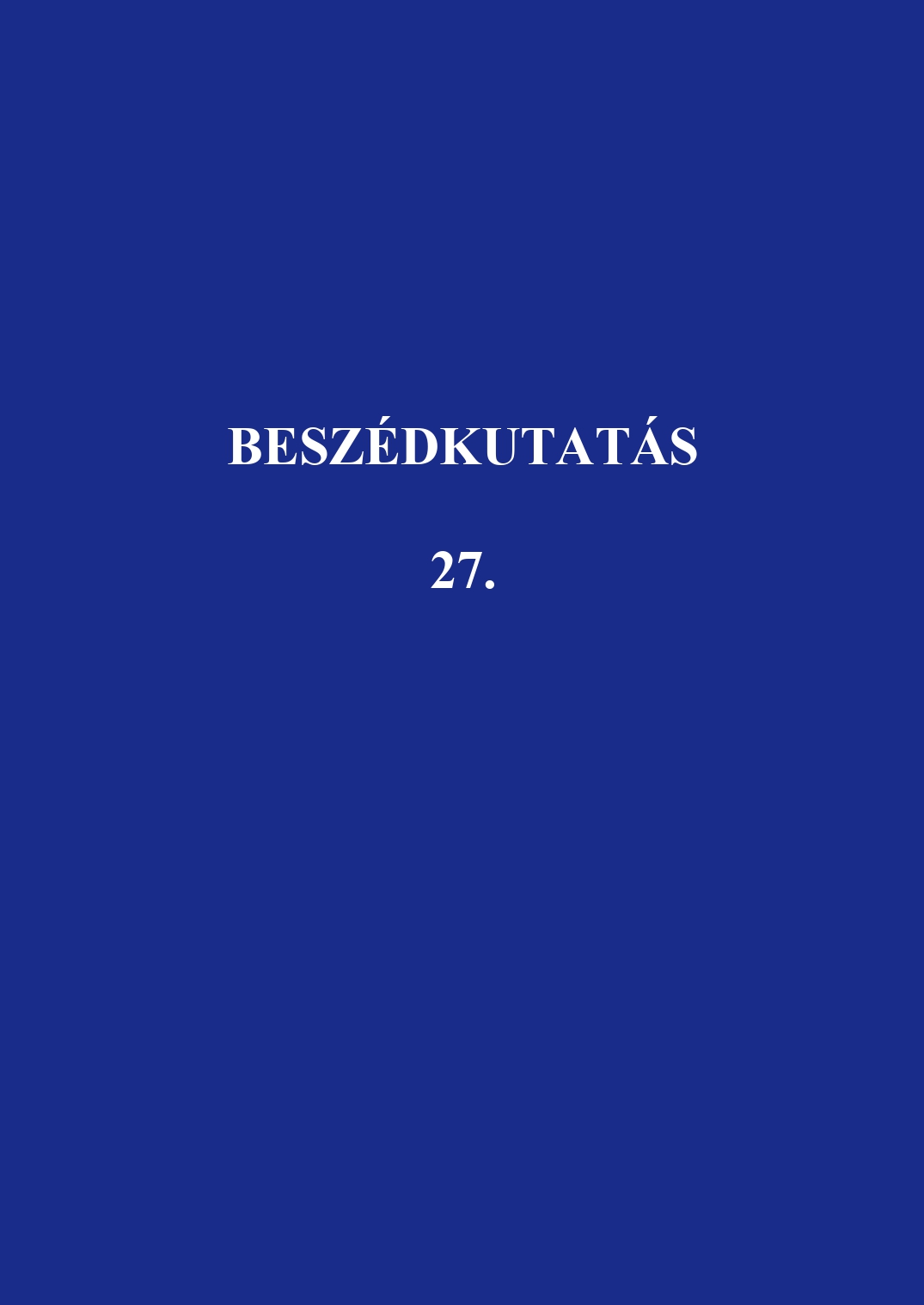Frázisok időzítési sajátosságai az életkor függvényében
Absztrakt
Timing characteristics of spontaneous speech across lifespan
The physiological changes that occur as people age can also be traced in temporal patterns of language. The goal of this research is to analyse the timing characteristics of spontaneous speech in four different age groups: children, teenagers, adults and elderly speakers. The main question of the research is whether and how the temporal characteristics of spontaneous speech change from childhood to old age. The speech materials of the study were selected from three speech databases: children’s material (3–10 years) from GABI (Bóna et al. 2014), teenagers (16–17 years) from TiniBEA (Gyarmathy–Neuberger 2015), and adults (20-90 years) from BEA database (Gósy et al. 2012). We analysed the articulation and speech rate of the speakers, the duration of the speech units, as well as the frequency and duration of pauses. The timing values were compared by age and gender of the speakers. The timing of the phrases appearing in the speech production of
teenagers showed similarities with the statements of adults, while in old age the rate of speech, the articulation and the number of words per speech units also decreased. The results of the research contribute to the understanding of the temporal peculiarities of speech, as well as the systematic, objective description of the changes taking place over the course of life.
A Beszédkutatásba leadott tanulmányokat máshol változatlan formában megjelentetni nem lehet. Más személy a szerkesztőbizottság engedélyével és megfelelő hivatkozással használhat fel ábrákat a publikált tanulmányokból.





